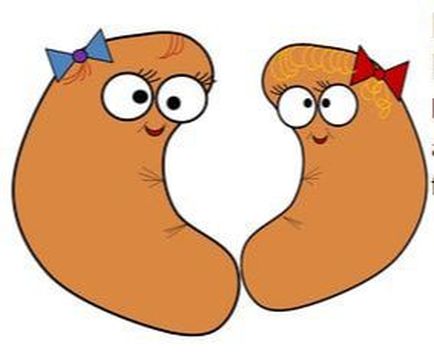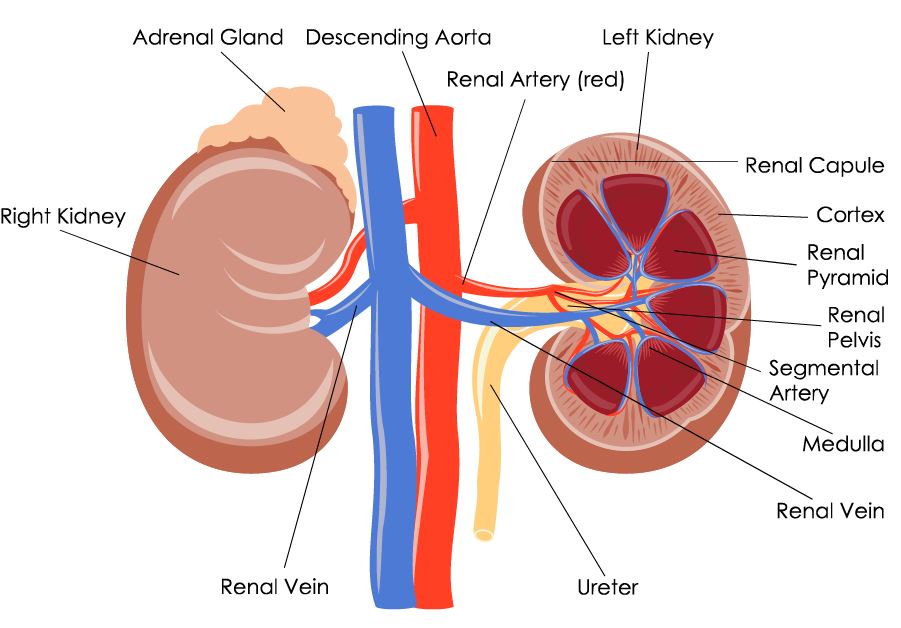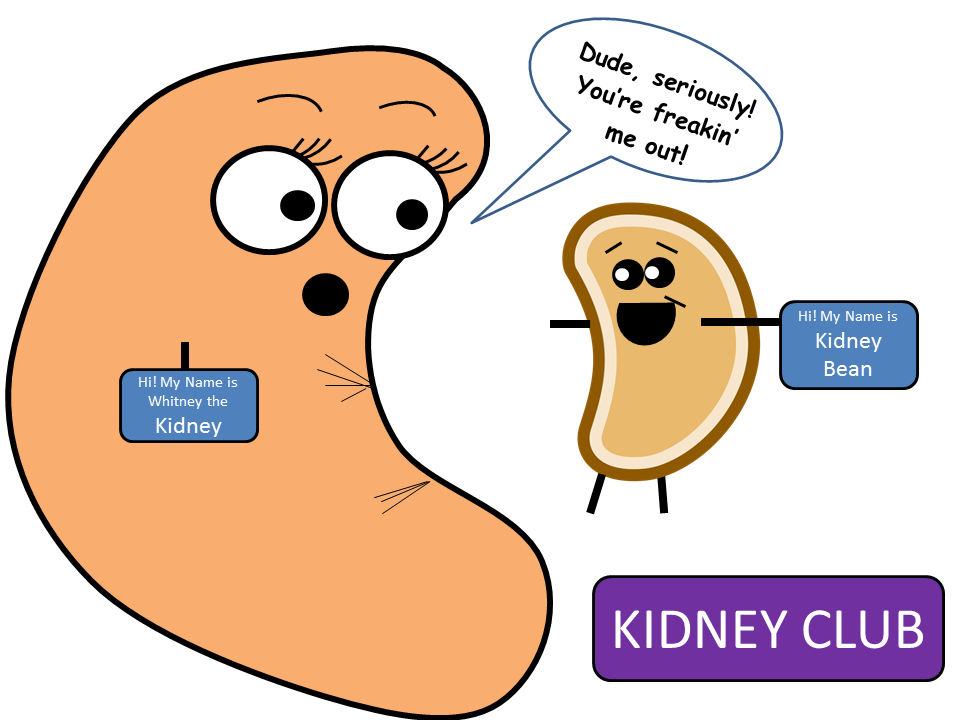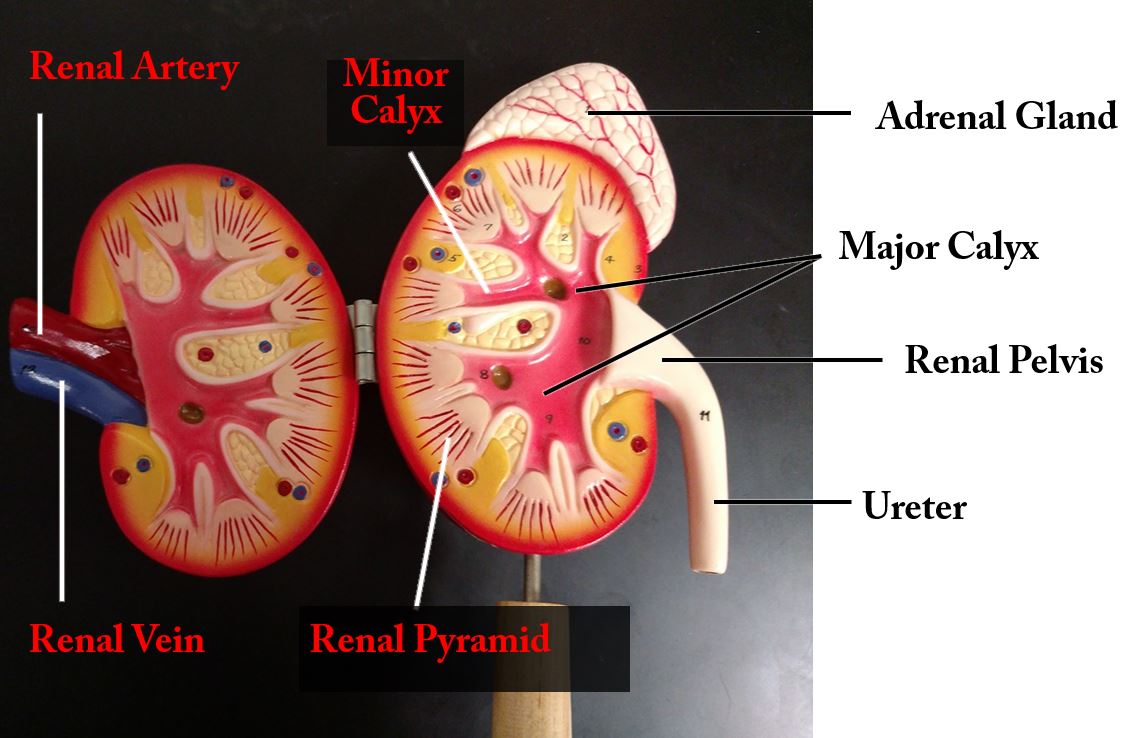|
Brittney the Kidney
Brittney the Kidney is quite cute. She live in a body that just had 2 extra large cokes as she watched the previews they show before movies so nobody moves. Brittney got ready. She saw that refill and knew that liquid was on its way still. Sydney has a job. There's never stagnation. She does readsorption and lots of filtration. She filters the blood removing the waste and readsorbes excess water with haste. Our kidneys function in homeostasis. Prevention of osmotic pressure's the basis. Brittney the Kidney's in a human being. The kidneys are shaped like a kidney bean. Brittney the kidney is so specialized with specialized structures, you could surmise. The functional unit inside of the kidney is called the nephron and its work is plenty. The nephron begins its work as a filter and filters the blood so you don’t go off kilter. Now part of the nephron that we must discuss, is a round sort of structure called the glomerulus. Once the blood enters inside the nephron, it enters the glo- merulus before long. The glomerulus has many capillaries. with super thin walls Through which solute leaves. What is left behind is the filtered blood that travels through and around up above. The filtrate goes through the capillary network inside of the glomerulus that does much of the work. Lucky for us, Glomeruli don't take vacation from their tough job of glomerular filtration. The filtration process, though, does not stop here. The filtered blood's called filtrate, my dear. Next, is a winding pathway made of tubes through which all of the body's filtrate now moves. These tubes have a name. The renal tubules. See? It's made up of 3 segments One, two and three. The first one of these is called the proximal tubule with structure that makes its function optimal for a process called tubular filtration. The process is solute and liquid separation Next I'll explain the second part of the 3. This section of tubule is the Loop of Henle. This loop travels downward and then it bends and makes a U-turn and then it ascends. The third part of tubule bends and it winds back and then forth for a couple of times. The filtrate travels this obstacle course. that they call the distal tubule, of course. The next part to come is the collecting duct. If readsorption's not through well then you're really..... unfortunate. At this point, the filtrate has all become urine from the readsoption that we saw occurin'. From the collecting duct into the ureter, a sudden urge came as she sat in the theater. Then on from there the pee enters the bladder. Her friend looked at her and said, "What is the matter?" Off to the restroom the body then flew. This story of Brittney the Kidney's now through. Next time you drink be rather thankful. And maybe do one coke instead of a tank-full. |
The acronym A WET BED Will help all its function to stick in your head The A is for acid, as in pH balance To protect from imbalance of pH is the challenge. If you are too basic you get alkalosis If you are too acidic you get acidosis. The W is for the balance of water If you get dehydrated that would be a bother. Equally important are your electrolytes If you guessed that was what E was for, you would be right! These are the ions like potassium And sodium and magnesium They help you to function When every one Of them is in balance your body can run. The T in the acronym stands for removal Of toxins from your blood stream. It has my approval! if things get too toxic you become sick. With too much toxicity your kidneys will quit. The B is for the blood-pressure control. Did you think what I said before was the whole? The kidneys even exert their power By excreting hormones for blood-pressure power. You might be wondering how they perform this function too. They perform this function through angiotensin II. This is a hormones that causes restriction Of the blood vessels to cause a prediction Of raising the blood pressure of their own host. Like when you sit up, when you need it the most. There is another product that is important Erythropoietin keeps blood cells in proportion D is the last letter in our cute acronym. It stands for the “D” in your daily vitamin. Too much of this vitamin can become a toxin. These kidney shield us by keeping it boxed in. The function of kidneys fall in the groups Secretion of hormones If you will be patient I would like to start with this The process we call gluconeogenesis When you try to diet it is increased To readsorb glucose from the kidneys. When someone you know does not have this They could get dibetes mille |
- Home
-
-
- Homeostasis - Physio
- Chemical Reactions - Physio
- Chemistry of Life - Inorganic - Physio
- The Chemistry of Cells - ORGANIC - Physio
- Chemical Bonds - Physio
- Metabolism - Physio
- Portal to the Skeletal system
- Endocrine and Homeostasis physio
- Muscle Physiology
- Blood
- Cardiovascular System
- Lymphatic System
- Respiratory System Physiology
- Renal System
- Digestive System
- Reproductive System
-
-
- Intro to Microorganisms
- Diseases
- EPIDEMIOLOGY
- HOST DEFENSES
- PATHOGENICITY
- History of Microbiology
- Levels of Organization cpp
- Bacteria versus Archaea
- Intro. to Bacteria
- Viruses and Prions
- Microbial Genetics
- Eukaryotic Organisms
- Archaeal Diversity
- Prokaryotic and Eukaryotic Cells
- Bacteria vs Archaeal Structures
- Taxonomic Classifications
- Archaea, Bacteria and Eukaryotic Cells
- MIC- CPP Course Calendar
- Cell Theory
- Biofilms
- Definition of Terms
-
-
- Cell Culture and Inoculations
- aseptic technique
- WET MOUNT
- Streak Plate
- Mannitol salt agar (MSA) Test
- Eosin Methylene Blue (EMB)
- Blood Agar
- Dilution Series and Calculations
- Phage Plaque Assay
- MICROBIOLOGY UNKNOWN LAB
- Microbiology Lab -study guide exam one
- Ex 2 - Microorganisms
- EX 3 - aseptic technique
- Ex 4 - Smear Prep
- Ex 5 - Simple Stains
- Ex 6 - Negative Staining
- Ex 8 - Gram Stain
- Ex 9 - Acid-Fast Stain
- Ex 10 - Endospore Stain
- Ex 11 - Motility Test
- ex 12 - Pure culture technique
- ex 13 - UV Radiation
- Ex 14 - Enumeration of Bacteria : Standard Plate Count
- ex - 15 Effects of Temperature on Growth
- ex 16 - Hand-washing
- ex 17 - pH and microbial growth
- ex 18 - Evaluation of Antiseptics
- ex 19 - Antibiotic Sensitivity : Kirby-Bauer Method
-
- Course Calendar - BIO 3070
- Bio of Pregnancy - SYLLABUS
- Course Information
- Evolution of Human Pregnancy
- History of Human Pregnancy
- Myths of Pregnancy and Fertility
- Female Reproductive System
- The Menstrual Cycle
- The Male Reproductive System and Male Contraception
- Fertility and Conception
- In-Vitro Fertilization
- Infertility
- Genetics of Reproduction
- Prenatal and Maternity Care
- The Pregnant Body
- fetal development
- Development of the Nervous System
- Stages of Labor
- Postpartum Issues
- Twins
-
- MIDTERM 2 STUDY GUIDE
- Exam 2 Study Guide
- Inrtoduction to ENV SCI
- Historical Perspective of Environmental Science
- Biomes
- FOOD CHAIN and FOOD WEB
- Biogeochemical Recycling
- Evolution - Our Beginning
- Genetic Inheritance
- Evolution: How Populations Change over Time
- Symbiosis
- Population Ecology
- Competition in Nature
- Herbivory
- Niches
- Fossil Fuels
-
-
-
- Enzymes
- OSMOSIS LAB
- Lab 1 - Bacteria, Protista and Fungi
- Lab 2 - Plantae and Animalia
- Photosynthesis
- Lab 5 - Introduction to Cells
- Lab 6 - The Chemistry of Cells
- Lab 7 - Membrane Transport
- Lab 8 - Enzymes
- Lab 9 - Photosynthesis
- Lab 10 Fermentation, Aerobic Cellular Respiration and Associated Major Organ Systems
-
- lab 2 - CELLS - BIO 111L
- lab 3 - DIFFUSION and OSMOSIS - BIO 111L
- lab 4 - The Circulatory System - BIO 111L
- lab 6 - Photosynthesis and Cellular Respiration
- lab 7 - Reproduction - BIO 111L
- DNA, GENES AND GENETIC INHERITANCE
- lab 9 - GENE EXPRESSION AND PROTEIN SYNTHESIS
- lab 10 - ADAPTATIONS - BIO 111L
- lab 11 - ECOSYSTEMS AND BIODIVERSITY
-
-
- Course Information
- Course Calendar
- Lesson 1 - Introduction to Human Sexuality
- Lesson 2 - Genetic Inheritance of Human Sexuality
- Lesson 3 - The Male Reproductive Tract
- Lesson 4 - The Female Reproductive Tract
- Lesson 5 - The Menstrual Cycle
- Midterm Exam Study Guide
- Lesson 6 - Fetal Development and Sexual Differentiation
- Lesson 7 - Disorders of Sexual Development
- Lesson 8 - Gender Identity and Sexual Attraction
- Lesson 9 - Fetishism
- Lesson 10 - Sexuality Throughout the World
- Lesson 11 - Sexuality Through the Ages
- Lesson 12 - Sexual Harassment, Coercion and Violence
- Final Exam Study Guide
- HISTOTECHNOLOGY
- The Brain
- The Brain
- The Structure of DNA
- Contact
-
- Lab 6 - The Chemistry of Cells
- A History of Anatomy
- Cell Membranes and Osmosis
- Chemistry of Life
- Muscle Movements
- The Muscles of the Head, Trunk and Shoulders
- The Muscles of the Limbs
- Nervous Tissue
- The Brain - Anat and Physiology
- Instructions for Taking BIO 3070
- MTH 121 Algebra A - Course Schedule and Info
- Laboratory Calendar CMC Spring 2019
- Genetics Lab
- Chemistry and Conversions Lab
- Digestion and Enzymes Lab
- Endocrine and Homeostasis Lab
- Muscles and Reflexes Lab
- Sensory Lab
- Immunohistochemistry
- Blood Lab
- Heart Rate, Blood Pressure, Electrocardiogram Lab
- Respiratory Lab
- Lab 11 Renal Lab
- Blood Typing Game
- Body Systems Interactive
- Ch 9 - The Central Nervous System
- Ch 10 - Sensory Systems
- Neuron Virtual Laboratory
- Virtual Eye Lab
- Virtual pH Lab
- Chemical Bonds Virtual Lab
- Beer's Law Virtual Lab
- Build-an-Atom Virtual Lab
- Diffusion Virtual Lab
- Ohm's Law Virtual Lab
- New Page
- Ch 8 - Nervous System
- Home
-
-
- Homeostasis - Physio
- Chemical Reactions - Physio
- Chemistry of Life - Inorganic - Physio
- The Chemistry of Cells - ORGANIC - Physio
- Chemical Bonds - Physio
- Metabolism - Physio
- Portal to the Skeletal system
- Endocrine and Homeostasis physio
- Muscle Physiology
- Blood
- Cardiovascular System
- Lymphatic System
- Respiratory System Physiology
- Renal System
- Digestive System
- Reproductive System
-
-
- Intro to Microorganisms
- Diseases
- EPIDEMIOLOGY
- HOST DEFENSES
- PATHOGENICITY
- History of Microbiology
- Levels of Organization cpp
- Bacteria versus Archaea
- Intro. to Bacteria
- Viruses and Prions
- Microbial Genetics
- Eukaryotic Organisms
- Archaeal Diversity
- Prokaryotic and Eukaryotic Cells
- Bacteria vs Archaeal Structures
- Taxonomic Classifications
- Archaea, Bacteria and Eukaryotic Cells
- MIC- CPP Course Calendar
- Cell Theory
- Biofilms
- Definition of Terms
-
-
- Cell Culture and Inoculations
- aseptic technique
- WET MOUNT
- Streak Plate
- Mannitol salt agar (MSA) Test
- Eosin Methylene Blue (EMB)
- Blood Agar
- Dilution Series and Calculations
- Phage Plaque Assay
- MICROBIOLOGY UNKNOWN LAB
- Microbiology Lab -study guide exam one
- Ex 2 - Microorganisms
- EX 3 - aseptic technique
- Ex 4 - Smear Prep
- Ex 5 - Simple Stains
- Ex 6 - Negative Staining
- Ex 8 - Gram Stain
- Ex 9 - Acid-Fast Stain
- Ex 10 - Endospore Stain
- Ex 11 - Motility Test
- ex 12 - Pure culture technique
- ex 13 - UV Radiation
- Ex 14 - Enumeration of Bacteria : Standard Plate Count
- ex - 15 Effects of Temperature on Growth
- ex 16 - Hand-washing
- ex 17 - pH and microbial growth
- ex 18 - Evaluation of Antiseptics
- ex 19 - Antibiotic Sensitivity : Kirby-Bauer Method
-
- Course Calendar - BIO 3070
- Bio of Pregnancy - SYLLABUS
- Course Information
- Evolution of Human Pregnancy
- History of Human Pregnancy
- Myths of Pregnancy and Fertility
- Female Reproductive System
- The Menstrual Cycle
- The Male Reproductive System and Male Contraception
- Fertility and Conception
- In-Vitro Fertilization
- Infertility
- Genetics of Reproduction
- Prenatal and Maternity Care
- The Pregnant Body
- fetal development
- Development of the Nervous System
- Stages of Labor
- Postpartum Issues
- Twins
-
- MIDTERM 2 STUDY GUIDE
- Exam 2 Study Guide
- Inrtoduction to ENV SCI
- Historical Perspective of Environmental Science
- Biomes
- FOOD CHAIN and FOOD WEB
- Biogeochemical Recycling
- Evolution - Our Beginning
- Genetic Inheritance
- Evolution: How Populations Change over Time
- Symbiosis
- Population Ecology
- Competition in Nature
- Herbivory
- Niches
- Fossil Fuels
-
-
-
- Enzymes
- OSMOSIS LAB
- Lab 1 - Bacteria, Protista and Fungi
- Lab 2 - Plantae and Animalia
- Photosynthesis
- Lab 5 - Introduction to Cells
- Lab 6 - The Chemistry of Cells
- Lab 7 - Membrane Transport
- Lab 8 - Enzymes
- Lab 9 - Photosynthesis
- Lab 10 Fermentation, Aerobic Cellular Respiration and Associated Major Organ Systems
-
- lab 2 - CELLS - BIO 111L
- lab 3 - DIFFUSION and OSMOSIS - BIO 111L
- lab 4 - The Circulatory System - BIO 111L
- lab 6 - Photosynthesis and Cellular Respiration
- lab 7 - Reproduction - BIO 111L
- DNA, GENES AND GENETIC INHERITANCE
- lab 9 - GENE EXPRESSION AND PROTEIN SYNTHESIS
- lab 10 - ADAPTATIONS - BIO 111L
- lab 11 - ECOSYSTEMS AND BIODIVERSITY
-
-
- Course Information
- Course Calendar
- Lesson 1 - Introduction to Human Sexuality
- Lesson 2 - Genetic Inheritance of Human Sexuality
- Lesson 3 - The Male Reproductive Tract
- Lesson 4 - The Female Reproductive Tract
- Lesson 5 - The Menstrual Cycle
- Midterm Exam Study Guide
- Lesson 6 - Fetal Development and Sexual Differentiation
- Lesson 7 - Disorders of Sexual Development
- Lesson 8 - Gender Identity and Sexual Attraction
- Lesson 9 - Fetishism
- Lesson 10 - Sexuality Throughout the World
- Lesson 11 - Sexuality Through the Ages
- Lesson 12 - Sexual Harassment, Coercion and Violence
- Final Exam Study Guide
- HISTOTECHNOLOGY
- The Brain
- The Brain
- The Structure of DNA
- Contact
-
- Lab 6 - The Chemistry of Cells
- A History of Anatomy
- Cell Membranes and Osmosis
- Chemistry of Life
- Muscle Movements
- The Muscles of the Head, Trunk and Shoulders
- The Muscles of the Limbs
- Nervous Tissue
- The Brain - Anat and Physiology
- Instructions for Taking BIO 3070
- MTH 121 Algebra A - Course Schedule and Info
- Laboratory Calendar CMC Spring 2019
- Genetics Lab
- Chemistry and Conversions Lab
- Digestion and Enzymes Lab
- Endocrine and Homeostasis Lab
- Muscles and Reflexes Lab
- Sensory Lab
- Immunohistochemistry
- Blood Lab
- Heart Rate, Blood Pressure, Electrocardiogram Lab
- Respiratory Lab
- Lab 11 Renal Lab
- Blood Typing Game
- Body Systems Interactive
- Ch 9 - The Central Nervous System
- Ch 10 - Sensory Systems
- Neuron Virtual Laboratory
- Virtual Eye Lab
- Virtual pH Lab
- Chemical Bonds Virtual Lab
- Beer's Law Virtual Lab
- Build-an-Atom Virtual Lab
- Diffusion Virtual Lab
- Ohm's Law Virtual Lab
- New Page
- Ch 8 - Nervous System




